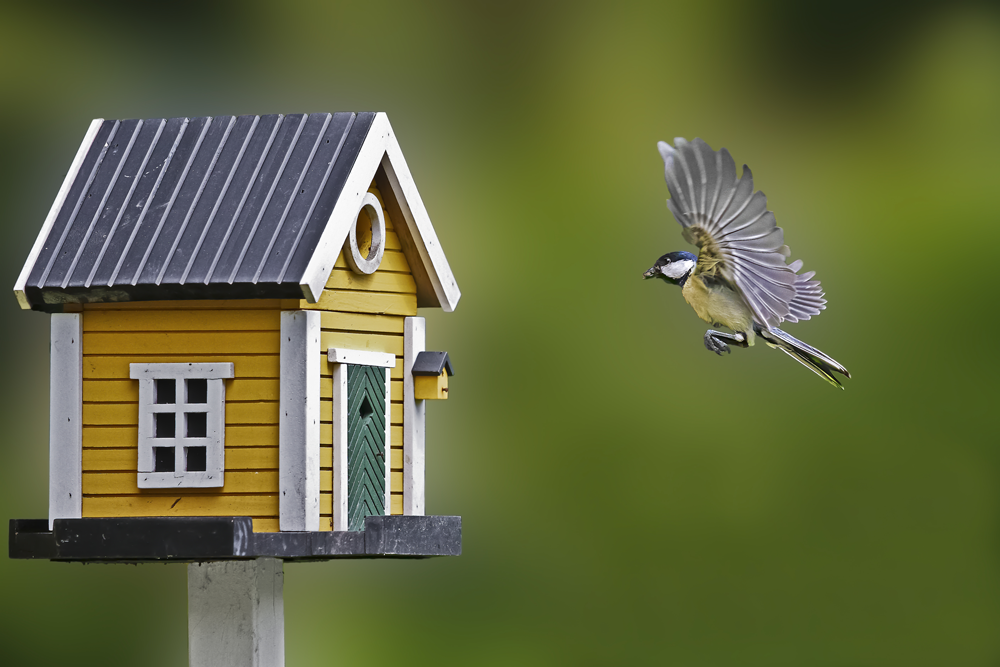If you’re looking to entice a colorful collection of birds to your home, you’ll need more than just a sack of birdseed. Offering food to your feathered friends is a great start, but if you want them to stick around for more than just a quick snack, you’ll need to provide a more welcoming environment. Here’s how to turn your home into a bird sanctuary.
Build a better habitat
Inviting birds into your yard starts with providing landscaping that resembles the natural habitats they prefer. This includes granting birds privacy with walls of foliage such as native shrubs, small trees and even tall grasses and perennials. It’s best to create a ceiling of tall deciduous and evergreen trees at the rear of your property and add small understory trees between them and your house. You can prune lower limbs and shrubs to provide perching places and maximize the viewing opportunities from your home.
Let birdseed bloom
Birdseed by the bag may be the simplest way to feed birds, but you can also grow your own bird feed. A variety of shrubs, perennials, grasses, annuals and other plants produce seeds that birds love. You’ll need to research your local region’s plants and birds to find a good pairing, but popular choices include blanketflower, coneflower, sunflowers, beautyberry and asters. Nectar-filled trumpet honeysuckle and cardinal flowers are favored by hummingbirds. Native oaks, hollies, dogwoods, sumac, cedars and spruces produce nuts and berries and offer shelter that are popular with many birds.
Offer a homey house
Read up on the birds you want to attract, and arrange your birdhouses in the way they prefer. Bluebirds, for example, prefer nesting boxes that are out in the open. Chickadees, however, favor thick leaf cover. Keep all nesting boxes away from human noise and activity so birds aren’t afraid to occupy their potential homes. Cats, which are one of the largest threats to small birds, should be kept indoors if possible. Once your birdhouse is set up, be patient for its new residents to arrive as sometimes the boxes require a bit of weathering before birds will move in.
Bring your birds a bath
You may be surprised to learn that the classic pedestal birdbath is in fact not the style that birds most prefer. Instead, birds often favor a bathing place that’s on the ground in a shaded area with nearby shrubs. Include gravel in the basin so birds can find their footing, and add some rocks along the outside to act as steps. A small pump or fountain will circulate the water to help keep it clean for your feathered guests.
Let fallen leaves lie
If your garden isn’t the tidiest, your local birds will thank you for it. A supply of dead leaves and small branches offer numerous benefits for birds: bugs and other small creatures to eat, supplies for nesting and hiding places from threats. If debris is piling up too much, break down the bigger branches by hand or with anvil pruners, and spread the material out evenly like mulch.
Find a fantastic feeder
Not all bird feeders are created equal. A quality-made birdfeeder with a tight-fitting lid and good drainage will serve you best. Pair it with a sturdy pole and a squirrel baffle to keep furry thieves from helping themselves to your feed. Even great feeders require maintenance, so give yours a thorough cleaning at least once a year, and clear any clogged holes as needed so moisture doesn’t build up and spoil your feed and feeder alike.
Conclusion
Coaxing avian guests into your yard requires diligence, patience and a bit of an investment, but if done right, you’ll be treated to the regular sights and sounds of these splendid creatures for seasons to come.

